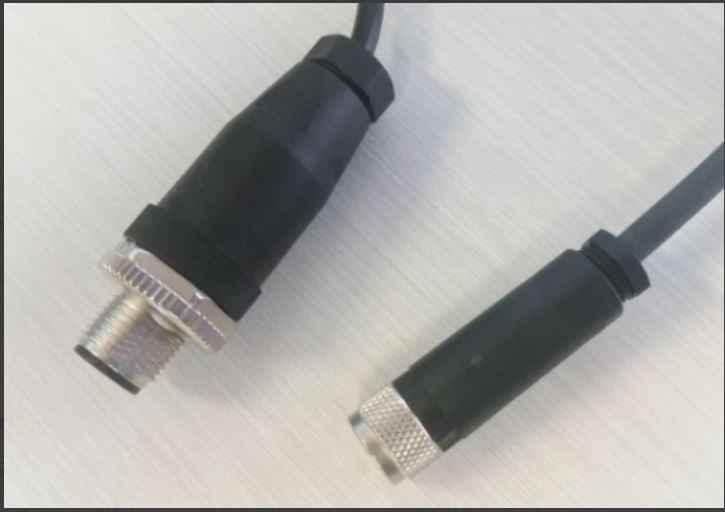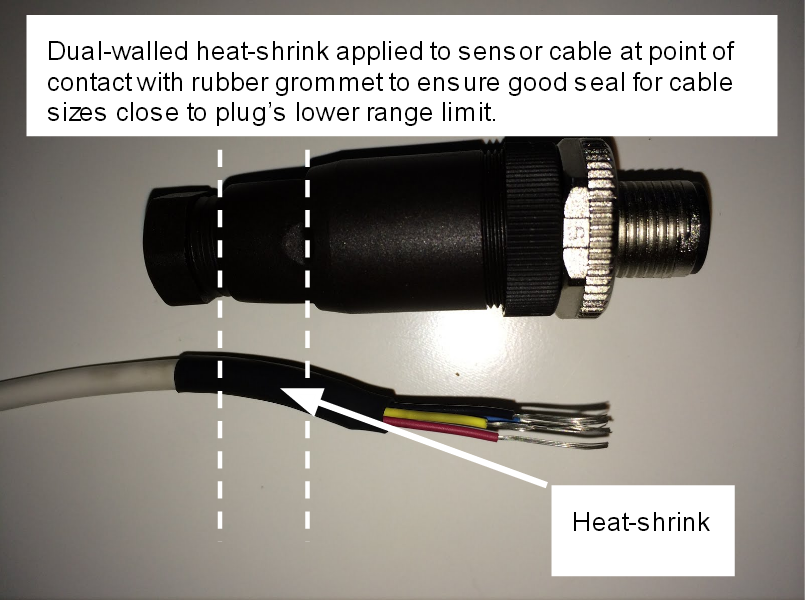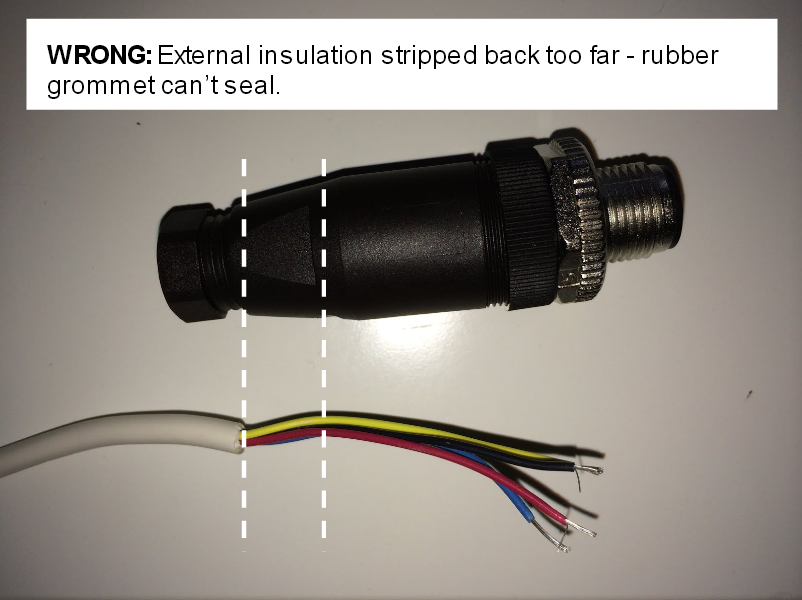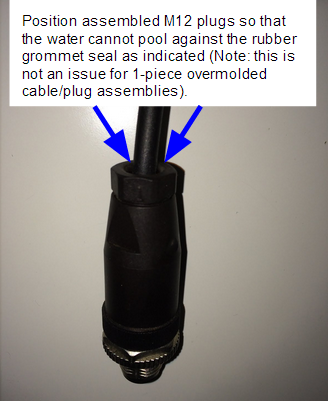Fitting M12 and M8 Connectors
Correct fitting of M12 & M8 connectors is vital for maximising the battery life and reliability of your Wildeye system.
Wildeye has standardised on M12 series connectors for rugged water-proof connections to meters & sensors. In addition, the Wildeye rechargeable (-R) option series has a waterproof M8 series connector by default as a charge connector.

Wildeye-supplied sensors will feature M12 connectors pre-fitted. Wildeye is also able to supply mating M12 & M8 field-connect connectors and splitter options upon request, see Wiring and Connectors.
Correct fitting and placement of M12 & M8 connectors is important to ensure long-term performance and optimal battery life. The following should be noted when fitting M12 & M8 connectors:
The rubber grommet must be fully sealed on the sensor/power/meter cable
For the rubber grommet to properly seal on the cable:
Cable diameter must be within the cable diameter range for the specific model of M12/M8 connector being used. It is recommended to have a cable diameter in the middle to upper end of the connector's cable diameter range. Where cable diameters are less than (or near) the lower limit of the range for the connector being used, you will need to increase the cable diameter at the point at which the rubber grommet makes contact by applying one or more layers of dual-walled (adhesive-lined) heat-shrink - see figure below.

The full diameter of the cable sheath must be available for the cable gland to make full contact. A common mistake is to remove too much of the outer insulation resulting in the cable gland being sealed around the individual cable cores rather than the outer insulation - see figure below.
We recommend stripping back no more than 25mm of sheath.

The cable needs to be round in cross-section. For cables with non-circular cross section, this may mean splicing it onto a round-section cable segment for the plug to attach to.
The field-connect connector must be assembled in the following order, to prevent twisting and damage to cores:
Screw connector body to connector base - Ensure the body is fully screwed to the base. There should be no thread visible after tightening.
IMPORTANT: Hold the body and cable stationary, and rotate the ring. If you do it the other way (rotating the body), the wires will get twisted insideTighten gland nut - It is very important this is done correctly. Tighten first with fingers, then use a spanner to moderately tighten. It should be tight enough so the cable can't slide through the gland with a moderate amount of force.
Inspection - Check the connector body is fully screwed to the base. Check the gland nut is tight. Check the cable cannot slide through the gland with a moderate amount of force.
The cable(s) should be positioned such that the chances of submersion and inundation are minimised
Cables should be positioned so that:
The connectors are above ground wherever possible. If the connectors need to be placed below ground they should ideally be placed within avoid (e.g. solenoid valve box, junction box) rather than directly into soil.
Where possible, the connectors should be placed in a location above any likely flood level.
The connectors should be placed where contact with direct rain or other water sources (e.g. sprinklers) is minimised.
Cables should be placed such that there is no opportunity for water (including any condensation which may form on the cable) to run down the cable and pool in the back nut of assmebled M12/M8 connectors (see below).

